第64章
Hence one might suppose, in connexion with the origin of men and quadrupeds, that, if ever they were really 'earth-born' as some say, they came into being in one of two ways; that either it was by the formation of a scolex at first or else it was out of eggs.For either they must have had in themselves the nutriment for growth (and such a conception is a scolex) or they must have got it from elsewhere, and that either from the mother or from part of the conception.If then the former is impossible (I mean that nourishment should flow to them from the earth as it does in animals from the mother), then they must have got it from some part of the conception, and such generation we say is from an egg.
It is plain then that, if there really was any such beginning of the generation of all animals, it is reasonable to suppose to have been one of these two, scolex or egg.But it is less reasonable to suppose that it was from eggs, for we do not see such generation occurring with any animal, but we do see the other both in the sanguinea above mentioned and in the bloodless animals.Such are some of the insects and such are the testacea which we are discussing;for they do not develop out of a part of something (as do animals from eggs), and they grow like a scolex.For the scolex grows towards the upper part and the first principle, since in the lower part is the nourishment for the upper.And this resembles the development of animals from eggs, except that these latter consume the whole egg, whereas in the scolex, when the upper part has grown by taking up into itself part of the substance in the lower part, the lower part is then differentiated out of the rest.The reason is that in later life also the nourishment is absorbed by all animals in the part below the hypozoma.
That the scolex grows in this way is plain in the case of bees and the like, for at first the lower part is large in them and the upper is smaller.The details of growth in the testacea are similar.This is plain in the whorls of the turbinata, for always as the animal grows the whorls become larger towards the front and what is called the head of the creature.
We have now pretty well described the manner of the development of these and the other spontaneously generated animals.That all the testacea are formed spontaneously is clear from such facts as these.
They come into being on the side of boats when the frothy mud putrefies.In many places where previously nothing of the kind existed, the so-called limnostrea, a kind of oyster, have come into being when the spot turned muddy through want of water; thus when a naval armament cast anchor at Rhodes a number of clay vessels were thrown out into the sea, and after some time, when mud had collected round them, oysters used to be found in them.Here is another proof that such animals do not emit any generative substance from themselves; when certain Chians carried some live oysters over from Pyrrha in Lesbos and placed them in narrow straits of the sea where tides clash, they became no more numerous as time passed, but increased greatly in size.The so-called eggs contribute to generation but are only a condition, like fat in the sanguinea, and therefore the oysters are savoury at these periods.A proof that this substance is not really eggs is the fact that such 'eggs' are always found in some testacea, as in pinnae, whelks, and purple-fish; only they are sometimes larger and sometimes smaller; in others as pectens, mussels, and the so-called limnostrea, they are not always present but only in the spring; as the season advances they dwindle and at last disappear altogether; the reason being that the spring is favourable to their being in good condition.In others again, as the ascidians, nothing of the sort is visible.(The details concerning these last, and the places in which they come into being, must be learnt from the Enquiry.)